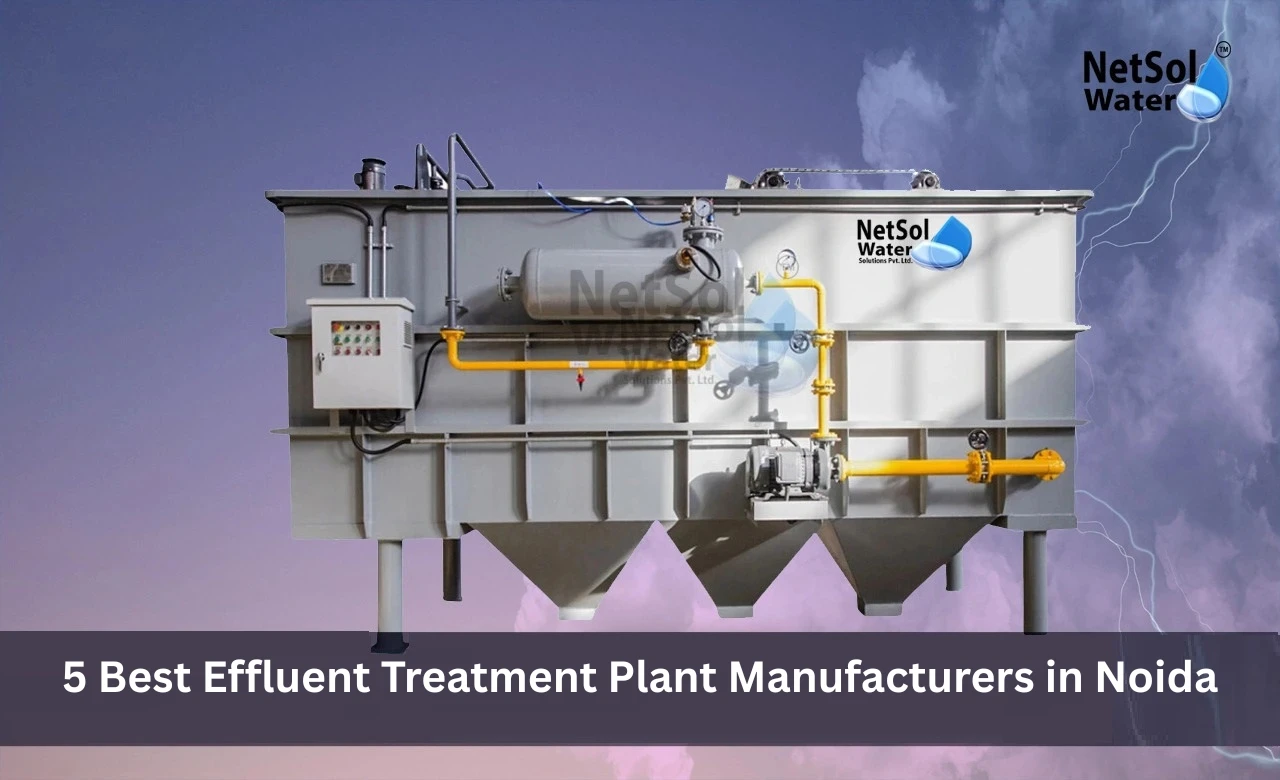3 Best Effluent Treatment Plant Manufacturers in Gurgaon
Effluent Treatment Plants are extremely important in the treatment of industrial wastewater prior to releasing it into the environment. They treat polluted water and render it safe to reuse or discharge. With increasing industrialization in a developing city like Gurgaon, having a trustable manufacturer of ETP becomes very crucial to industries that wish to remain compliant and environment-friendly.
Here we have compiled the 3 best effluent treatment plant manufacturers in Gurgaon based on performance, customer satisfaction, system quality, and technology.
3 Best Effluent Treatment Plant Manufacturers in Gurgaon
1. Netsol Water
We at Netsol Water are glad to be listed as one of the 3 best effluent treatment plant manufacturers in Gurgaon. For years, we have been working on offering sustainable and efficient wastewater treatment solutions that can find application in different industries such as pharmaceuticals, textiles, food processing, and more.
What distinguishes us is our commitment to customer satisfaction, emphasis on new technologies, and support even after installation. We provide innovative and user-friendly high-quality ETPs. Our systems comply with all government regulations and yield results that enable industries to save water and minimize pollution.
We not only produce plants but also provide AMC, plant automation, retrofitting, and operational training. Our company always makes sure that each project, whether small or large, is dealt with complete responsibility. It is for this reason that companies have faith in us while searching for the 3 Best Effluent Treatment Plant Manufacturers in Gurgaon.
2. Urban STP Solutions
Urban STP Solutions is another renowned name in Gurgaon for industrial effluent treatment. The organization provides compact and tailor-made ETP units for small as well as medium-sized industries. Their systems are energy-saving and economical in nature.
They specialize in chemical as well as biological treatment technologies. Their designs also incorporate modular structures, which facilitate quicker and more flexible installation. Urban STP Solutions is also well-reputed for extending good support both during and after the plant installation, thus making them among the 3 best effluent treatment plant manufacturers in Gurgaon who can offer good service at reasonable prices.
3. EcoSmart Water Systems
EcoSmart Water Systems is unique with its cutting-edge automation and intelligent monitoring capabilities in ETPs. They specialize in developing environmentally friendly treatment technologies that are forward-looking. Their systems are equipped with sensors, alarms, and data logging capabilities that assist in online monitoring of wastewater quality.
Their field of expertise is offering ETPs to chemical plants, leather processing units, and dyeing mills. They provide both traditional and advanced treatment patterns depending on the requirements of the clients. Their R&D department continually strives to minimize operating expenses and maximize plant performance. Due to their solid technical roots, they have achieved a position among the 3 best effluent treatment plant manufacturers in Gurgaon.
What Makes a Manufacturer the Best?
To be among the 3 best Effluent Treatment Plant Manufacturers in Gurgaon, a firm should meet various criteria:
- Experience and Expertise: Experience in years of working in the field and dealing with various effluent types makes effective solutions delivery easier.
- Technology Used: Efficiency and latest systems ensure better treatment quality and reduced operation expenses.
- Customer Support: Installation to after-sales service support by a dedicated team guarantees hassle-free plant functioning.
- Customization: Different sectors require different solutions. Reputable manufacturers provide their own ETPs as per the individual client’s requirement.
- Compliance: The systems should be CPCB and SPCB compliant to stay clear of legal troubles.
All the following manufacturers, including ourselves at Netsol Water, tick the above boxes and have established themselves as the best in Gurgaon’s rapidly expanding industrial market.
Why Gurgaon Needs Reliable ETP Manufacturers
Gurgaon has thousands of factories and offices. The growth of industrial processes has also created an increase in wastewater generation. If not treated, this wastewater can cause harm to nearby water bodies and the environment.
That’s why industries are particularly looking for the 3 best effluent treatment plant manufacturers in Gurgaon — not only for regulatory compliance, but for embracing sustainable and responsible business practices.
Conclusion
Selecting a suitable ETP manufacturer really does make a big difference in the effectiveness of your wastewater management. Whether you operate a small unit or a big manufacturing facility, an investment in a professionally managed and well-designed Effluent Treatment Plant will benefit you in the long term.
The 3 best effluent treatment plant manufacturers in Gurgaon — Netsol Water, Urban STP Solutions, and EcoSmart Water Systems — have raised the bar in the industry and continue to assist industries in water treatment in the right way.
If you’re about to establish or expand your ETP, you might want to reach out to one of these reliable manufacturers to look for a system that suits your needs best.
Do you need an advice or assistance on selecting the best water and waste water treatment unit? We have solutions for all your problems!
Let us know your problem, our experts will make sure that it goes away.
For an assistance or related query,
Call on +91-9650608473
Or write us at enquiry@netsolwater.com



